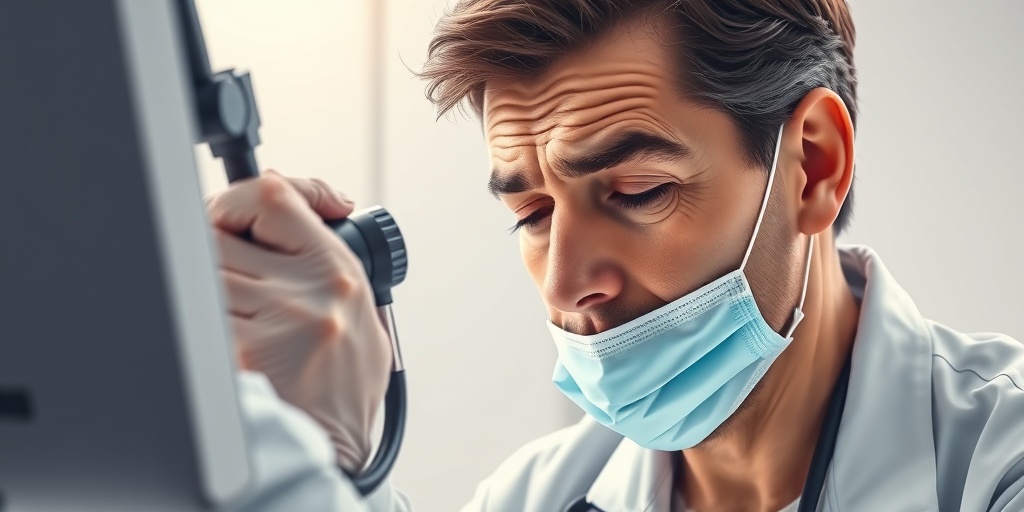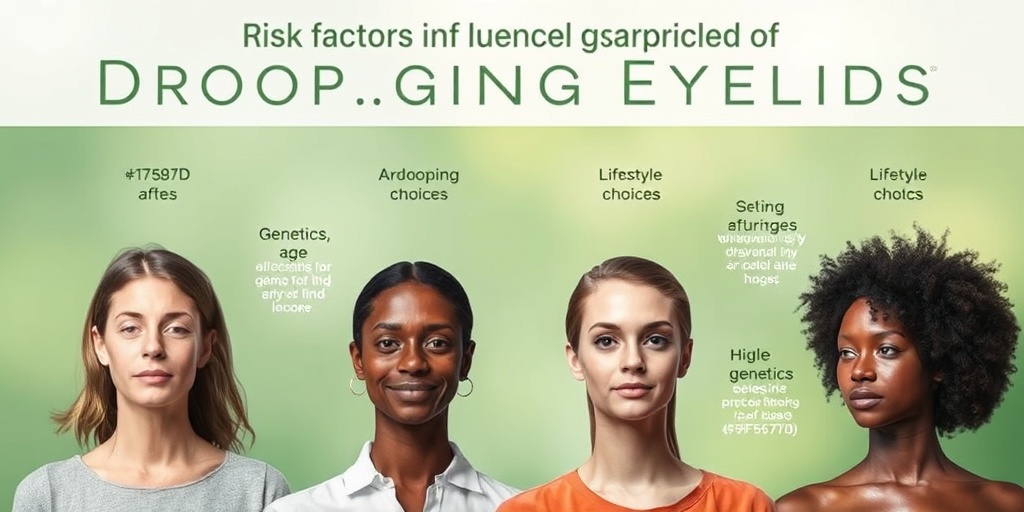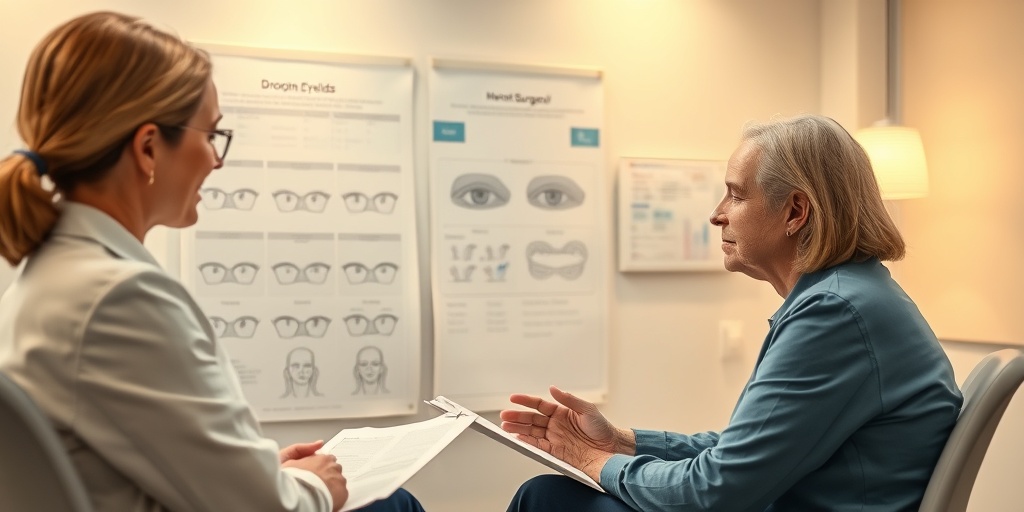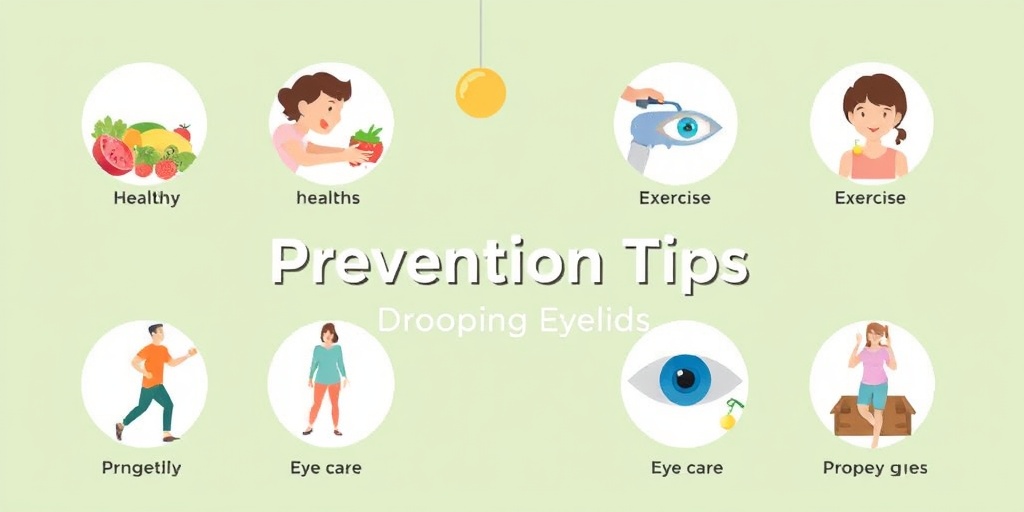What Are Drooping Eyelids?
Drooping eyelids, medically known as ptosis, refer to a condition where one or both of the upper eyelids sag or droop. This can occur due to various factors, including aging, muscle weakness, or underlying health conditions. While drooping eyelids can be a cosmetic concern, they may also affect vision, making it essential to understand the causes and implications of this condition.
Understanding the Anatomy of the Eyelid
The eyelids are composed of skin, muscle, and connective tissue. The primary muscle responsible for lifting the eyelid is called the levator palpebrae superioris. When this muscle weakens or becomes paralyzed, it can lead to drooping. Additionally, the skin around the eyelids can lose elasticity with age, contributing to the appearance of sagging.
Common Causes of Drooping Eyelids
Several factors can lead to drooping eyelids, including:
- Aging: As we age, the skin loses elasticity, and the muscles may weaken, leading to ptosis.
- Neurological Conditions: Conditions such as myasthenia gravis or Horner’s syndrome can affect the nerves controlling eyelid movement.
- Injury or Trauma: Damage to the eyelid or surrounding areas can result in drooping.
- Genetics: Some individuals may inherit a predisposition to drooping eyelids.
- Medical Conditions: Diabetes, stroke, or tumors can also contribute to this condition.
Understanding the underlying cause is crucial for determining the appropriate treatment options. If you notice sudden changes in your eyelids, it’s advisable to consult a healthcare professional for a thorough evaluation.
Drooping Eyelids Symptoms
The symptoms of drooping eyelids can vary depending on the severity and underlying cause. Here are some common signs to look out for:
Visual Impairment
One of the most significant concerns with drooping eyelids is the potential impact on vision. If the eyelid droops significantly, it may obstruct the field of vision, making it difficult to see clearly. This can lead to issues with daily activities such as reading, driving, or even watching television.
Fatigue and Eye Strain
Individuals with drooping eyelids may experience increased fatigue and eye strain. The muscles around the eyes may work harder to compensate for the drooping, leading to discomfort and tiredness, especially after prolonged use of the eyes.
Changes in Appearance
Drooping eyelids can alter one’s appearance, often making individuals look tired or older than they are. This can affect self-esteem and confidence, prompting some to seek cosmetic solutions.
Associated Symptoms
In some cases, drooping eyelids may be accompanied by other symptoms, such as:
- Double vision: This can occur if the muscles controlling eye movement are affected.
- Headaches: Straining to see can lead to tension headaches.
- Dry eyes: Inadequate eyelid closure can result in dryness and irritation.
If you experience any of these symptoms, especially if they develop suddenly, it’s essential to seek medical advice. Early intervention can help address the underlying causes and prevent further complications.
When to Seek Medical Help
While drooping eyelids can be a benign cosmetic issue, they can also signal more serious health concerns. If you notice:
- Sudden onset of drooping eyelids
- Accompanied neurological symptoms (e.g., weakness, difficulty speaking)
- Changes in vision
It’s crucial to consult a healthcare professional promptly. They can provide a comprehensive evaluation and recommend appropriate treatment options, which may include drooping eyelids surgery or other interventions.
For more information on drooping eyelids and related health concerns, consider visiting Yesil Health AI, a valuable resource for evidence-based health answers.
In conclusion, understanding drooping eyelids is essential for recognizing potential health issues and seeking timely treatment. Whether it’s due to aging, medical conditions, or other factors, being informed can empower you to take the necessary steps for your eye health. 👁️✨

Drooping Eyelids Causes
Drooping eyelids, medically known as ptosis, can be a common concern for many individuals. Understanding the underlying causes is essential for effective management and treatment. Here are some of the primary causes of drooping eyelids:
1. Aging
As we age, the skin loses its elasticity and the muscles that support the eyelids weaken. This natural process can lead to sagging eyelids, making them appear droopy. The effects of aging can be particularly noticeable in individuals over the age of 50. 👵👴
2. Muscle Disorders
Certain muscle disorders, such as myasthenia gravis, can cause weakness in the muscles that lift the eyelids. This condition can lead to fluctuating eyelid droopiness, often worsening with fatigue. If you notice that your eyelids droop more as the day progresses, it may be worth consulting a healthcare professional.
3. Neurological Conditions
Neurological disorders, such as Horner’s syndrome or a stroke, can also result in drooping eyelids. These conditions affect the nerves that control eyelid movement, leading to ptosis. If drooping eyelids are accompanied by other neurological symptoms, immediate medical attention is necessary.
4. Eye Injuries or Surgery
Injuries to the eye or surrounding areas can lead to drooping eyelids. Additionally, surgical procedures, particularly those involving the eyelids or surrounding structures, may result in temporary or permanent ptosis. If you’ve recently undergone surgery, it’s essential to monitor your eyelid position and consult your surgeon if you have concerns.
5. Congenital Factors
Some individuals are born with drooping eyelids, a condition known as congenital ptosis. This can affect one or both eyelids and may require surgical intervention if it impacts vision or self-esteem.
6. Botox and Other Cosmetic Procedures
While Botox is commonly used for cosmetic enhancements, improper administration can lead to drooping eyelids. If you notice changes in your eyelid position after receiving Botox, it’s crucial to contact your provider for advice. In some cases, the effects may be temporary, but it’s always best to err on the side of caution. 💉
Drooping Eyelids Risk Factors
Understanding the risk factors associated with drooping eyelids can help in early detection and management. Here are some key risk factors to consider:
1. Age
As mentioned earlier, aging is a significant risk factor for drooping eyelids. The natural aging process leads to a decline in skin elasticity and muscle strength, making older adults more susceptible to ptosis.
2. Family History
If you have a family history of drooping eyelids or related conditions, you may be at a higher risk. Genetic predisposition can play a role in the development of ptosis, particularly congenital forms.
3. Medical Conditions
Individuals with certain medical conditions, such as diabetes or neuromuscular disorders, may be more prone to developing drooping eyelids. These conditions can affect muscle strength and nerve function, leading to ptosis.
4. Lifestyle Factors
Unhealthy lifestyle choices, such as smoking and excessive sun exposure, can accelerate the aging process of the skin, increasing the likelihood of drooping eyelids. Protecting your skin and maintaining a healthy lifestyle can help mitigate these risks. 🌞🚭
5. Eye Strain
Prolonged periods of eye strain, often due to excessive screen time or poor lighting, can contribute to muscle fatigue around the eyes. While this may not directly cause drooping eyelids, it can exacerbate the appearance of ptosis in individuals already predisposed to it.
6. Previous Eye Surgeries
Individuals who have undergone eye surgeries, such as cataract surgery or eyelid surgery, may have an increased risk of developing drooping eyelids. It’s essential to discuss potential risks with your surgeon before any procedure.
In conclusion, understanding the causes and risk factors of drooping eyelids is crucial for effective management. If you notice any changes in your eyelid position, consider consulting a healthcare professional for a thorough evaluation and personalized advice. 🩺

Drooping Eyelids Diagnosis
Drooping eyelids, medically known as ptosis, can be more than just a cosmetic concern. They may affect your vision and overall quality of life. Understanding how drooping eyelids are diagnosed is crucial for effective treatment. Here’s what you need to know about the diagnostic process.
Initial Consultation
The first step in diagnosing drooping eyelids is a thorough consultation with a healthcare professional, typically an ophthalmologist or a plastic surgeon. During this appointment, you can expect:
- Medical History Review: Your doctor will ask about your medical history, including any previous eye conditions, surgeries, or medications that may contribute to eyelid drooping.
- Symptom Assessment: Be prepared to discuss when you first noticed the drooping, whether it affects one or both eyelids, and if you experience any associated symptoms like vision changes or discomfort.
Physical Examination
After the initial consultation, a physical examination will be conducted. This may involve:
- Visual Acuity Test: To assess how well you can see, your doctor may perform a visual acuity test.
- Eye Movement Evaluation: Your doctor will check how well your eyelids move and whether there are any restrictions in your eye movements.
- Photographs: Sometimes, photographs may be taken to document the extent of the drooping for future reference.
Additional Tests
If necessary, further tests may be conducted to determine the underlying cause of your drooping eyelids. These tests can include:
- Blood Tests: To check for conditions like myasthenia gravis, which can cause muscle weakness and lead to ptosis.
- Imaging Studies: In some cases, imaging tests like MRI or CT scans may be ordered to examine the structures around the eyes.
Once a diagnosis is made, your healthcare provider will discuss the best treatment options tailored to your specific needs.
Drooping Eyelids Treatment Options
When it comes to treating drooping eyelids, there are several options available, ranging from non-invasive procedures to surgical interventions. The right choice depends on the severity of the condition and its underlying cause.
Non-Surgical Treatments
For mild cases of drooping eyelids, non-surgical treatments may be effective:
- Botox Injections: Botox can temporarily lift the eyelids by relaxing the muscles that pull them down. This treatment is particularly useful for those with mild ptosis or drooping caused by muscle tension.
- Ptosis Crutch: A specialized device that attaches to glasses can help support the eyelid, providing a temporary solution for those who are not ready for surgery.
Surgical Options
If non-surgical treatments are ineffective or if the drooping is severe, surgical options may be considered:
- Blepharoplasty: This is a common surgical procedure that removes excess skin and fat from the eyelids, which can help improve their appearance and function.
- Levator Muscle Repair: In cases where the muscle responsible for lifting the eyelid is weak, a surgical procedure can be performed to tighten or repair it, restoring proper eyelid function.
Post-Treatment Care
Regardless of the treatment chosen, proper post-treatment care is essential for optimal recovery. This may include:
- Follow-Up Appointments: Regular check-ups with your healthcare provider to monitor healing and assess the effectiveness of the treatment.
- Managing Side Effects: Be aware of potential side effects, such as swelling or bruising, and follow your doctor’s advice on managing these symptoms.
In conclusion, whether you are considering non-surgical options like Botox or contemplating surgical interventions, understanding the diagnosis and treatment of drooping eyelids is vital for making informed decisions about your eye health. 🌟

Drooping Eyelids Home Remedies
Drooping eyelids, medically known as ptosis, can be a source of concern for many individuals. While some may seek surgical options, there are several effective home remedies that can help alleviate the appearance of drooping eyelids. Here are some natural solutions you can try:
1. Cold Compress
Applying a cold compress can help reduce swelling and tighten the skin around your eyes. This method is simple and effective:
- Soak a clean cloth in cold water or use ice wrapped in a towel.
- Place it over your closed eyelids for about 10-15 minutes.
- Repeat this process a few times a day for best results.
2. Cucumber Slices
Cucumbers are not just a refreshing snack; they also have soothing properties that can help with drooping eyelids:
- Cut fresh cucumber into thick slices.
- Place the slices on your eyelids for 10-15 minutes.
- The coolness and hydration can help reduce puffiness and improve skin elasticity.
3. Aloe Vera Gel
Aloe vera is known for its skin-tightening properties. Here’s how to use it:
- Extract fresh aloe vera gel from the leaf.
- Gently apply it to your eyelids and surrounding areas.
- Leave it on for about 30 minutes before rinsing off with lukewarm water.
4. Egg White Mask
Egg whites can help firm the skin and reduce the appearance of drooping eyelids:
- Whisk one egg white until frothy.
- Apply a thin layer to your eyelids and let it dry.
- Rinse off with warm water after 15-20 minutes.
5. Facial Exercises
Regular facial exercises can strengthen the muscles around your eyes, potentially reducing drooping:
- Try raising your eyebrows while keeping your eyes closed for a few seconds.
- Another exercise involves gently pulling your eyelids upward with your fingers while looking up.
- Perform these exercises daily for noticeable results.
Drooping Eyelids Prevention Tips
Preventing drooping eyelids is often easier than treating them. Here are some effective tips to help maintain the firmness and elasticity of your eyelids:
1. Stay Hydrated
Drinking plenty of water is essential for maintaining skin elasticity. Aim for at least 8 glasses a day to keep your skin hydrated and healthy.
2. Protect Your Eyes from the Sun
UV rays can accelerate skin aging, leading to drooping eyelids. Always wear sunglasses with UV protection when outdoors. This simple step can significantly reduce the risk of skin damage.
3. Maintain a Healthy Diet
A balanced diet rich in vitamins and antioxidants can help keep your skin youthful. Include foods high in:
- Vitamin C (citrus fruits, strawberries)
- Vitamin E (nuts, seeds)
- Omega-3 fatty acids (fish, flaxseeds)
4. Get Enough Sleep
Lack of sleep can lead to tired-looking eyes and drooping eyelids. Aim for 7-9 hours of quality sleep each night to allow your body to repair and rejuvenate.
5. Avoid Smoking and Excessive Alcohol
Both smoking and excessive alcohol consumption can contribute to premature skin aging. Quitting smoking and moderating alcohol intake can help maintain skin elasticity and overall health.
6. Regular Eye Check-ups
Regular visits to an eye specialist can help monitor any changes in your eyelids and overall eye health. Early detection of issues can lead to more effective treatment options.
By incorporating these home remedies and prevention tips into your routine, you can effectively manage and reduce the appearance of drooping eyelids. Remember, consistency is key! 🌟

Frequently Asked Questions about Drooping Eyelids
What are drooping eyelids?
Drooping eyelids, also known as ptosis, refer to a condition where one or both eyelids sag or droop. This can affect vision and may be a cosmetic concern for many individuals.
What causes drooping eyelids?
There are several factors that can lead to drooping eyelids, including:
- Age-related changes in the eyelid muscles
- Neurological conditions
- Injury or trauma to the eye area
- Genetic predisposition
- Medical conditions such as myasthenia gravis
Can drooping eyelids affect vision?
Yes, drooping eyelids can obstruct vision, especially if the eyelid droops significantly. This can lead to difficulties in seeing clearly and may require medical intervention.
What are the treatment options for drooping eyelids?
Treatment for drooping eyelids may include:
- Surgical options, such as eyelid surgery (blepharoplasty)
- Botox injections to temporarily lift the eyelids
- Addressing underlying medical conditions
Is drooping eyelids surgery safe?
Yes, drooping eyelids surgery is generally considered safe when performed by a qualified surgeon. However, as with any surgical procedure, there are risks involved, and it is essential to discuss these with your healthcare provider.
Can Botox help with drooping eyelids?
Botox can be used to treat drooping eyelids by temporarily relaxing the muscles around the eyes, which may help lift the eyelids. However, results vary, and it is important to consult with a professional for personalized advice.
What should I do if I notice drooping eyelids?
If you notice drooping eyelids, it is advisable to consult with a healthcare professional. They can assess your condition and recommend appropriate treatment options based on the underlying cause.
Are drooping eyelids a sign of aging?
Yes, drooping eyelids are often associated with aging, as the skin and muscles around the eyes lose elasticity over time. This natural process can lead to sagging eyelids.
Where can I find more information about drooping eyelids?
For more information on drooping eyelids, consider visiting reputable medical websites or consulting with an eye care specialist who can provide detailed insights and guidance.




